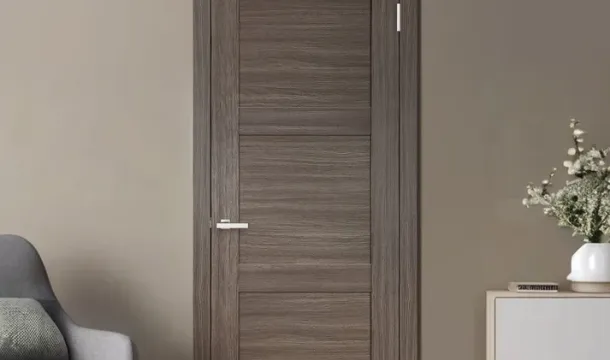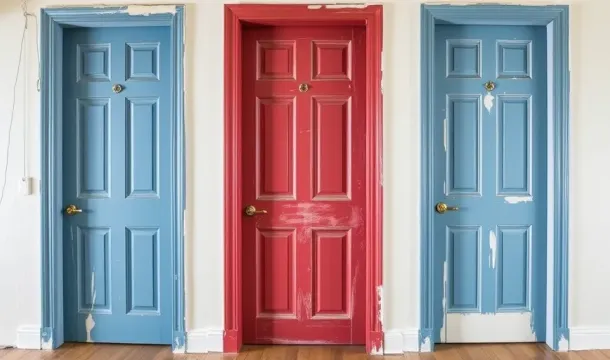Matching Interior Doors with Canadian Home Architecture Styles
Popular Articles
Prioritize a selection that aligns with the unique architecture found throughout Canada. From cozy cottages to modern urban dwellings, the right entryways can elevate both functionality and aesthetic appeal. Consider materials like wood or fiberglass, which resonate with natural surroundings while providing durability.
Matching styles with your home's overall design is crucial. Traditional homes may benefit from classic panel designs, while contemporary residences often call for sleek, minimalist options. Pay attention to trends in hardware and finishes; brushed nickel and matte black are popular choices that enhance visual coherence.
Explore various styles, such as French doors for an elegant touch or sliding barn doors for a rustic feel. Each choice should reflect not just personal taste but also harmonize with existing architectural elements. This will ensure a seamless integration into your living space.
Understanding Popular Home Styles
Modern designs often feature clean lines and minimalistic aesthetics, utilizing materials like glass and metal. For these spaces, sleek panels can enhance the overall look. Rustic architecture, rooted in natural elements, benefits from wooden selections that offer warmth and texture, matching the organic feel.
Traditional homes showcase intricate moldings and classic shapes. Opting for doors with detailed craftsmanship complements this style beautifully. In contrast, contemporary trends favor bold colors and unique patterns; choosing vibrant options can make a striking statement while maintaining harmony within the decor.
Cottage-style residences emphasize coziness and charm. Light-colored finishes or pastel hues can accentuate this inviting atmosphere effectively. Urban dwellings may lean towards industrial themes; metal frames or reclaimed wood can resonate well with this edgy aesthetic.
Transitional designs blend various influences seamlessly. A versatile selection of doors that combines elements from both modern and traditional styles allows for adaptability in decor while maintaining an overall cohesive appearance.
Selecting Suitable Door Materials
For a refined aesthetic, consider solid wood options like oak or maple, which complement traditional architecture and provide durability. These materials align well with classic designs while offering the warmth of natural grain patterns.
In contemporary settings, engineered wood or MDF (medium-density fiberboard) presents a versatile selection. These materials can be easily finished to match modern color trends and styles, providing a sleek appearance without sacrificing structural integrity.
Glass inserts in doors can enhance light flow and create an open feel. Frosted or textured glass balances privacy with elegance, making it suitable for various interior spaces. This option works well in minimalist designs where transparency is key.
Metal doors contribute a striking industrial look that suits urban lofts or modern residences. Steel provides exceptional security and resilience while allowing for unique design features such as bold colors or finishes that stand out against softer elements within the home.
When selecting materials, assess how they harmonize with existing decor and architectural elements. Consider maintenance requirements as well; some finishes may demand more care than others. Align your choices with the overall vision for your space to ensure a cohesive and stylish outcome.
Matching Doors with Design Themes
Selecting the right entryways requires a keen eye for aesthetics and how they harmonize with existing architectural elements. For modern residences, sleek, minimalist frames in neutral tones can enhance contemporary themes while maintaining simplicity. In contrast, traditional settings benefit from ornate designs crafted from rich woods, often showcasing intricate carvings or classic finishes.
Transitional spaces blend features from both modern and traditional categories; therefore, choosing a door that incorporates clean lines with subtle detailing strikes a perfect balance. Popular trends also suggest incorporating glass panels to allow natural light to flow while maintaining privacy–an excellent choice for urban lofts and cozy bungalows alike.
In rustic environments, such as log cabins or farmhouse styles, robust materials like reclaimed wood introduce warmth and character. Pair these with wrought iron hardware to reinforce the overall theme. For coastal designs, consider doors painted in soft pastels or bright whites that reflect the airy feel of seaside living.
When assessing your options, keep in mind how colors and textures interact within each space. A cohesive palette will create visual harmony throughout the home, making selection crucial for achieving desired design outcomes. By aligning doors with specific themes, you not only enhance functionality but also elevate the entire interior experience.
Considering Climate Impact on Doors
Selecting the right entryway elements requires attention to environmental factors. In regions with extreme temperatures, doors must provide insulation and energy efficiency. Look for materials with excellent thermal performance, such as fiberglass or solid wood, which help maintain consistent indoor climates.
The aesthetic appeal of the chosen style should harmonize with functional requirements. For instance, contemporary designs may incorporate sleek metal frames that withstand harsh weather while offering modern visual impact. When matching these features with architectural trends, consider finishes that resist moisture and fading due to sunlight exposure.
Ensure your selection complements prevailing design themes without compromising durability. Opt for seals and weather stripping that prevent air leaks, enhancing both comfort and energy savings. A thoughtful approach to combining aesthetics and practicality will yield optimal results in achieving a cohesive look throughout your residence.
Stay informed about advancements in door technology that address climate challenges. Innovations such as insulated cores or smart locking mechanisms can enhance security while contributing to overall efficiency. Being mindful of these aspects will ensure your choices align with both current trends and long-term sustainability goals.
Installation Tips for Homeowners
Ensure accurate measurements before commencing. Measure the width and height of the opening where the new panel will fit, accounting for any framing irregularities.
- Leveling: Use a level to confirm that the opening is even. Adjust as necessary to prevent complications during installation.
- Hinge Placement: Mark hinge positions carefully on both the frame and panel. Standard practice typically involves placing hinges about 7 inches from the top and 11 inches from the bottom.
- Pre-drilling Holes: Pre-drill screw holes to avoid splitting materials. This is especially important with hardwood options.
- Use Quality Hardware: Select robust hinges and handles that align with your aesthetic preferences while ensuring durability.
Consider weather stripping if insulation is a priority; this can enhance energy efficiency by minimizing drafts.
- Select Proper Tools: A drill, screwdriver, chisel, and level are essential for a smooth setup process.
- Follow Manufacturer Instructions: Each product may have specific requirements; adhere strictly to guidelines provided in packaging.
- Test Functionality: After installing, open and close the unit several times to check for smooth operation and make adjustments if needed.
A well-fitted panel not only enhances aesthetics but also contributes significantly to overall functionality within diverse architectural designs.
If unsure, consult with professionals or seek assistance from knowledgeable friends or family members who have experience in similar projects.
Popular Articles

Choosing the Perfect Interior Doors for Your Canadian Home

A Complete Guide to Choosing Interior Doors for Canadian Homes
